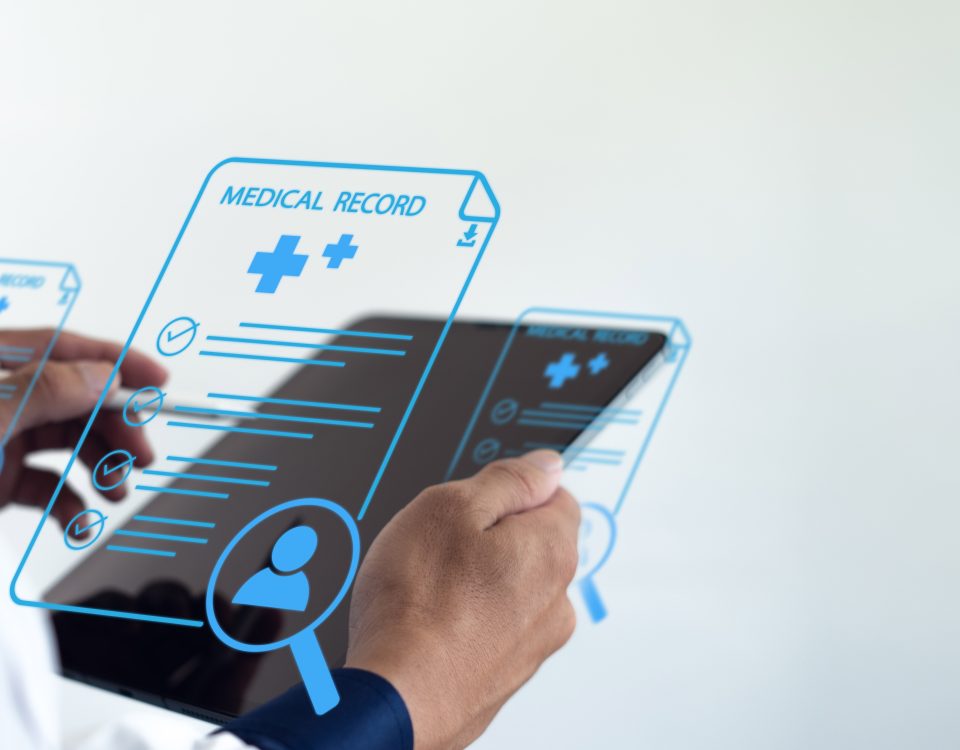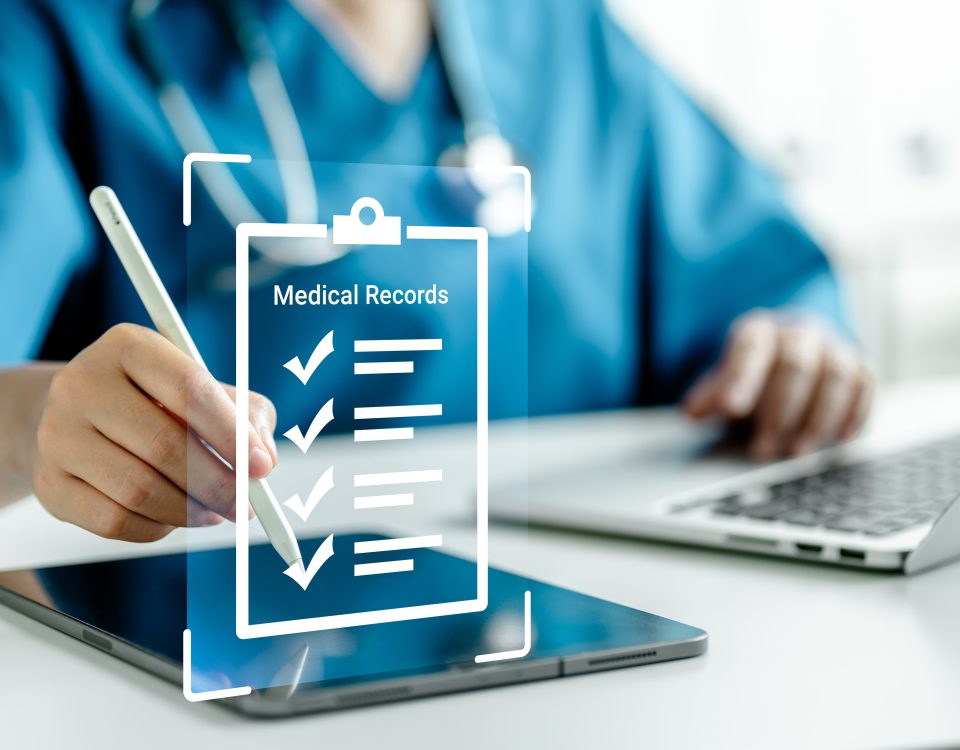- Home
- About Us
- EMR Features
-
-
- EMR Features
-
- Patient Health Features
-
- Clinic Features
-
-
- Specialties
-
- Blog
- Contact Us
7 Ways to Streamline Patient Care With Health Records in Ontario

Delivering high-quality patient care in Ontario has always been a top priority for healthcare providers, but the methods for achieving this goal are rapidly evolving. Gone are the days when patient files were scattered across desks, storage rooms, and filing cabinets. Today, digital solutions are at the forefront of healthcare, transforming how clinics, hospitals, and practitioners manage patient information. Health records in Ontario are now more accessible, secure, and actionable, thanks to the integration of electronic systems and the support of OHIP in Ontario.
Online medical records in Ontario are not just a technological upgrade—they represent a fundamental shift in how care is coordinated and delivered. By embracing digital health records, clinics can reduce administrative burdens, enhance diagnostic accuracy, and provide patients with more flexible care options. Here are seven practical ways that health records in Ontario are streamlining patient care, making life easier for providers and patients alike.
1. Centralize Patient Information with a Unified EMR System
A unified electronic medical record (EMR) system is the foundation for efficient patient care. Centralizing patient information in one secure location ensures that every authorized provider can access a complete, real-time view of a patient’s health journey. This includes everything from medical histories and lab results to prescriptions and specialist notes.
In Ontario, EMR systems that integrate with OHIP simplify access to health records, eliminating the need to chase down paper files or duplicate information across multiple systems. This centralization reduces the risk of missing crucial details, which can lead to medical errors or delays in care. With all data available at a glance, healthcare teams can make faster, more informed decisions, improving outcomes and patient satisfaction.
2. Enable Seamless Information Sharing Across Providers
One of the biggest challenges in healthcare is ensuring that patient information flows smoothly between different providers. When records are siloed, patients often have to repeat their medical history, and providers may order unnecessary tests or miss important details. Online medical records in Ontario address this by enabling secure, authorized sharing of information across clinics, hospitals, and specialists.
With digital health records, a family doctor can instantly share a patient’s recent test results with a referred specialist, or a hospital can access a patient’s primary care history during an emergency. This seamless exchange, supported by OHIP in Ontario, ensures that everyone involved in a patient’s care is on the same page. The result is less duplication, fewer errors, and a more coordinated approach to treatment.
3. Automate Routine Administrative Tasks
Administrative tasks can eat up a significant portion of a healthcare provider’s day. Scheduling appointments, managing billing, tracking follow-ups, and processing insurance claims are all necessary but time-consuming activities. Health records in Ontario, when managed through an advanced EMR, automate many of these processes.
For example, online medical records in Ontario can generate appointment reminders, process OHIP billing automatically, and flag patients who are due for preventive screenings. This automation not only reduces the administrative burden on staff but also minimizes the risk of manual errors. Clinics can operate more efficiently, freeing up time and resources to focus on direct patient care.
4. Improve Diagnostic Accuracy with Integrated Data Tools
Accurate diagnosis depends on having access to complete and up-to-date patient information. Health records in Ontario, when digitized, provide clinicians with instant access to lab results, imaging, medication lists, and more. Many EMR systems also include integrated decision-support tools that can flag potential drug interactions, allergies, or abnormal test results.
These tools help providers make safer, evidence-based decisions. For instance, if a patient’s new prescription could interact with an existing medication, the system will alert the provider before the prescription is finalized. With OHIP in Ontario, ensuring that records are comprehensive and current significantly enhances diagnostic accuracy, reducing the risk of adverse events and improving patient outcomes.
5. Offer Telehealth and Remote Access Options
The shift towards virtual care has accelerated in recent years, and online medical records in Ontario are central to this transformation. Secure digital platforms allow healthcare providers to review patient histories, update records, and conduct virtual consultations from any location. Patients, in turn, can access their own health information online, view lab results, and manage appointments without having to visit the clinic in person.
This flexibility is especially valuable for patients in rural or remote areas, those with mobility challenges, or anyone seeking to minimize travel. Telehealth, powered by robust health records in Ontario, makes care more accessible and convenient while maintaining high standards of privacy and security. Providers can deliver timely care, follow up with patients, and coordinate with other professionals, all without being tied to a physical office.
6. Ensure Compliance with Ontario Health Regulations
Protecting patient privacy and maintaining data security are non-negotiable in the healthcare industry. Health records in Ontario must comply with strict provincial regulations, including those established by the Ontario Health Insurance Plan (OHIP) and the Personal Health Information Protection Act (PHIPA). Online medical records systems are designed to meet these requirements, featuring encryption, secure user authentication, and detailed audit trails.
By using compliant digital systems, clinics can safeguard sensitive patient information and avoid costly breaches or regulatory penalties. Regular system updates, staff training, and robust access controls further strengthen security. Compliance isn’t just about avoiding fines—it’s about building trust with patients and ensuring that their health information is handled with the utmost care.
7. Track Outcomes and Continuously Improve Care
One of the most powerful benefits of digital health records is the ability to track patient outcomes over time. Online medical records in Ontario allow providers to monitor trends, measure the effectiveness of treatments, and identify areas for improvement. Aggregated data can be used to inform quality improvement initiatives, support clinical research, and guide resource allocation.
For example, a clinic might use EMR data to identify patients who are overdue for preventive screenings or to evaluate the success of a new treatment protocol. By leveraging these insights, healthcare teams can refine their processes, improve patient satisfaction, and demonstrate accountability to both patients and regulatory bodies. Continuous improvement becomes a natural part of daily operations, driven by real-world data.
Future-Proofing Patient Care in Ontario
The healthcare environment in Ontario is changing rapidly, with new challenges and opportunities emerging every year. Health records in Ontario, when managed through secure and flexible online platforms, are the key to staying ahead. Clinics and hospitals that invest in robust digital solutions can adapt more easily to evolving regulations, patient expectations, and technological advancements.
Online medical records in Ontario are not just a solution for today—they are an investment in the future of healthcare. By centralizing information, enabling seamless sharing, automating tasks, supporting compliance, and driving continuous improvement, these systems are setting a new standard for patient care. OHIP in Ontario continues to support this digital shift, making it easier for providers to deliver efficient, connected, and patient-centered services.
Take the Next Step with Alembico EMR
Ready to streamline patient care and simplify daily operations? Alembico EMR offers a secure, user-friendly, and fully OHIP-compliant platform for managing health records in Ontario. With powerful features for online medical records, automated workflows, and integrated data tools, Alembico EMR helps healthcare providers focus on what matters most—delivering exceptional care to every patient. Start building a smarter, more connected practice with Alembico EMR today.
Also read:
5 Ways Electronic Medical Record Systems Improve Data Security
Tags: healthcare billing software, healthcare scheduling in the software, Healthcare Software


